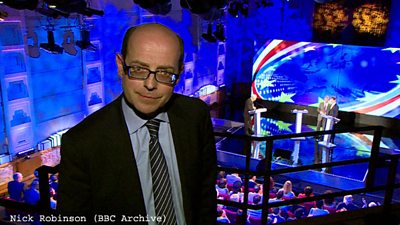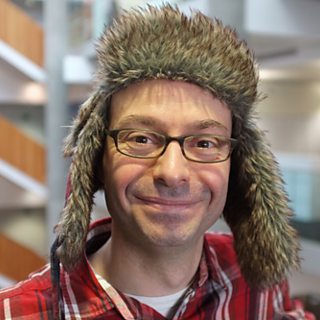
Internet Research & Future Services have been working with Oxford University to open up new ways to search archives.
One of the most frustrating tasks in TV research is looking for the perfect political quote. Precious hours can be lost as you search through a pile of news, interview or conference footage, looking for a needle in a haystack.
R&D's Internet Research and Future Services team think recent advances in face recognition technology could assist with this painstaking work. New techniques allow the rapid search of digitised material and the retrieval of just those moments where a chosen subject is on screen.
We've been assisting Professor Andrew Zisserman's team at Oxford University with their exciting research into the rapid retrieval of faces from large-scale archives. If you’re the sort of person who likes to dive straight in, you can play with a live prototype here (best to use with Chrome):
For best results make sure you’ve selected the ‘People’ option and limit your searches to contemporary politicians (this is because the footage is taken from �������� News programmes from the last 5 years). For those who are interested in the technology behind face recognition, Oxford's approach is notable in two main ways:
Firstly, it uses the web as an on-the-fly resource for building a facial ‘classifier’. You need around three dozen images for face recognition to work accurately, taken under a variety of lighting and pose conditions. A facial classifier is built using the shape and distances between the eyes, nostrils, corners of the mouth and other variables. This classifier is then used to make a judgement about the best matched photos in your archive to the search subject.Oxford’s system cleverly uses the fact that there are now so many photos of notable people on the web that it’s possible to produce a classifier 'on the fly' via simple image search.
The second innovation is the scale and speed at which the process works. For an unknown face, the system searches through a database of 146m images, culled from 50,000 �������� News programmes in around 30 seconds. Once a face has been learnt by the system future searches will only take a few seconds. Oxford’s research suggests that faster performance on much bigger databases would be straightforward, so we’re hopeful their approach could scale to the whole of the �������� archive in time.
Oxford have also been looking into object and scene detection work, which allows users to search for things like logos, particular types of buildings or objects such as paintings. These new types of object search still need some development to be as intuitive to use as face recognition, but they point the way to some exciting new approaches to searching large archives in the future. Our thanks to Professor Zisserman and the team at Oxford: Relja Arandjelović, Ken Chatfield, Omkar Parkhi and Andrea Vedaldi.
Rob Cooper is the Development Producer in �������� Research & Development.
